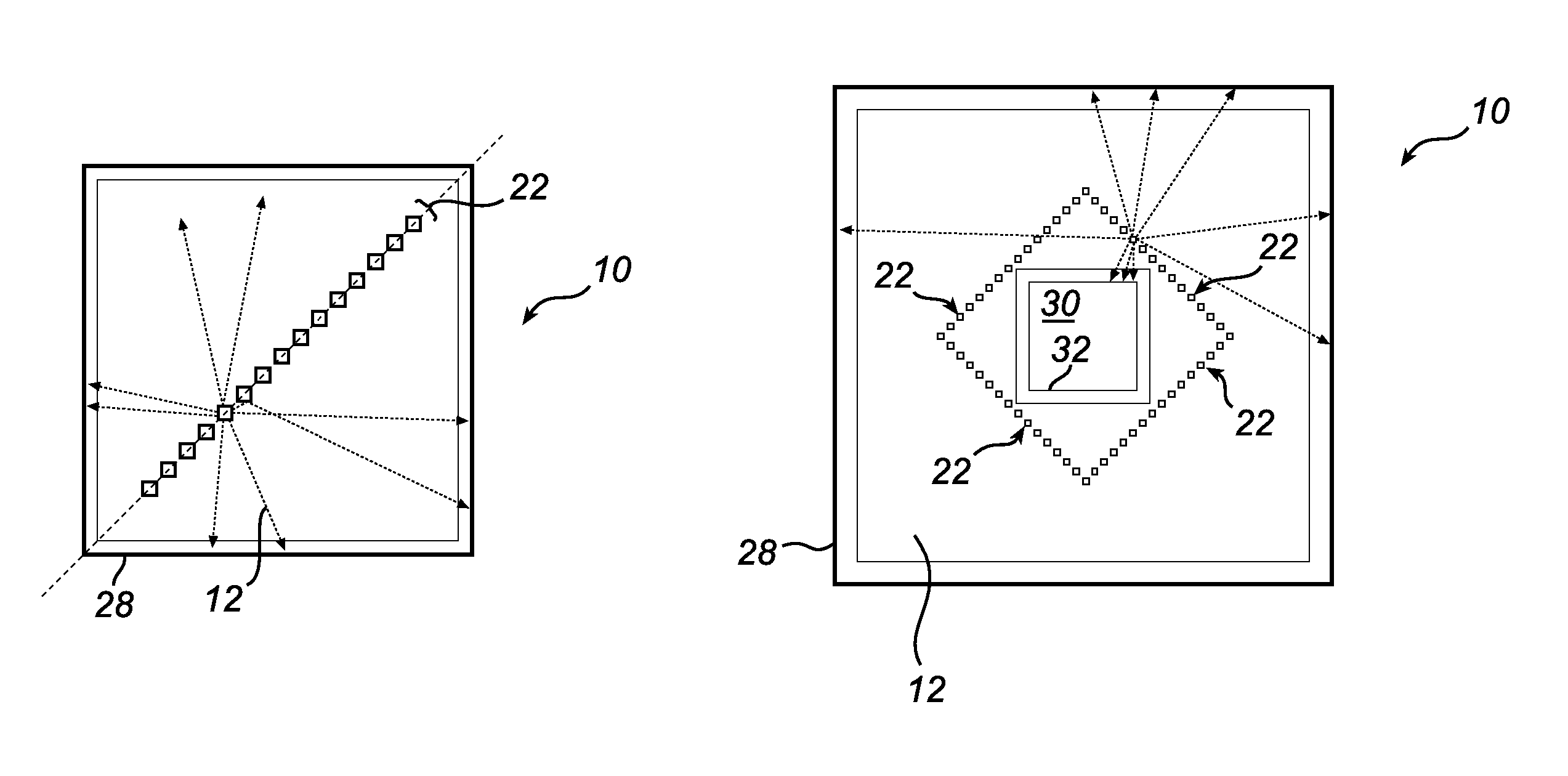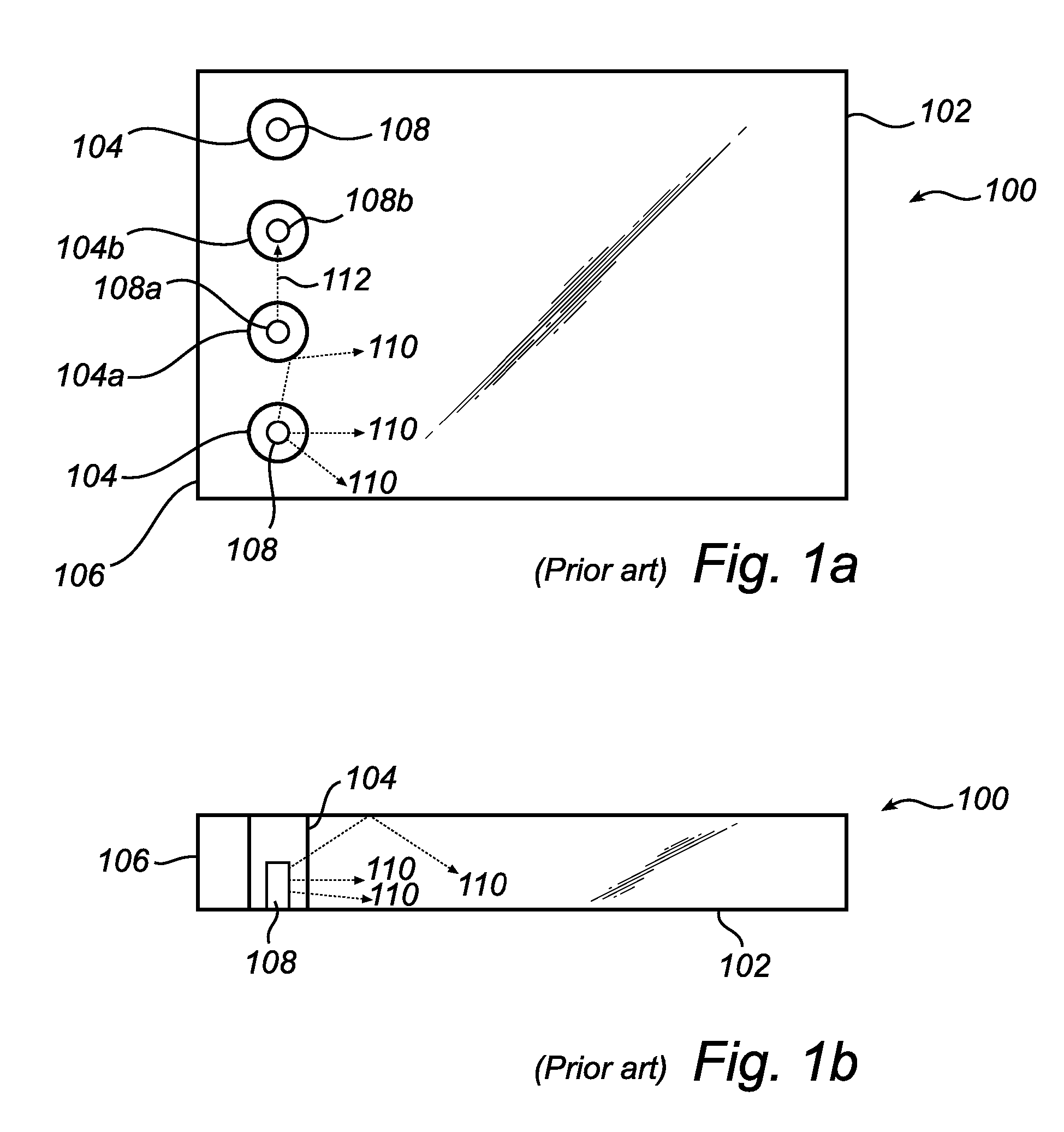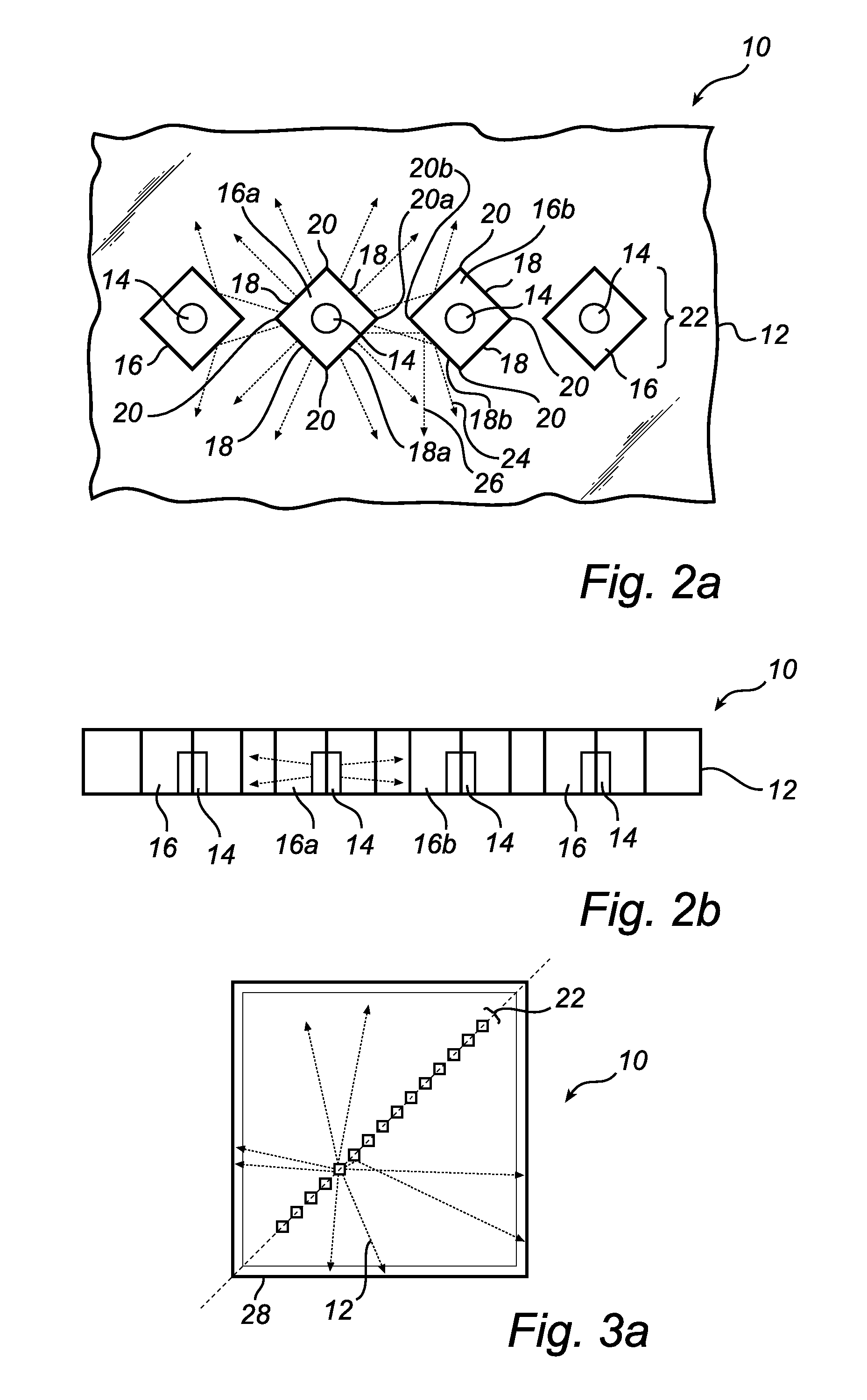Lighting device employing a light guide plate and a plurality of light emitting diodes
a light guide plate and light-emitting diode technology, which is applied in the direction of lighting and heating apparatus, planar/plate-like light guides, instruments, etc., can solve the problems of degrading the lumen efficiency of such a lighting device and insufficient light of a single led, so as to reduce the probability of light loss, prevent interactions, and promote out-coupling
- Summary
- Abstract
- Description
- Claims
- Application Information
AI Technical Summary
Benefits of technology
Problems solved by technology
Method used
Image
Examples
Embodiment Construction
[0028]A light emitting diode (LED) based lighting device according to an embodiment of the present invention will now be described with reference to FIGS. 2a-2b. The lighting device denoted 10 comprises a light guide plate 12. The light guide plate 12 is transparent and can be made of glass or plastics, for example.
[0029]The lighting device 10 further comprises a plurality of LEDs generally designated 14 accommodated in holes generally designated 16 and arranged in the light guide plate 12. The holes 16 could be through holes (as in FIG. 2b) or holes having an opening towards one side of the light guide plate 12 only. The LEDs 14 are preferably side-emitting omnidirectional LEDs. Alternatively, unidirectional LEDs or clusters of unidirectional LEDs that are aimed in opposite directions can be used.
[0030]Each hole 16 in the embodiment illustrated in FIGS. 2a-2b is square-shaped with four in-coupling side facets generally designated 18. Between each two adjoining in-coupling side face...
PUM
| Property | Measurement | Unit |
|---|---|---|
| angle | aaaaa | aaaaa |
| angle of departure | aaaaa | aaaaa |
| shape | aaaaa | aaaaa |
Abstract
Description
Claims
Application Information
 Login to View More
Login to View More - R&D
- Intellectual Property
- Life Sciences
- Materials
- Tech Scout
- Unparalleled Data Quality
- Higher Quality Content
- 60% Fewer Hallucinations
Browse by: Latest US Patents, China's latest patents, Technical Efficacy Thesaurus, Application Domain, Technology Topic, Popular Technical Reports.
© 2025 PatSnap. All rights reserved.Legal|Privacy policy|Modern Slavery Act Transparency Statement|Sitemap|About US| Contact US: help@patsnap.com



